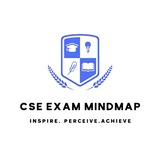🔆 Recent Developments in India–Sri Lanka Relations
PM Modi’s visit to Sri Lanka led to, reinforcing India’s ‘Neighbourhood First’ policy and the ‘MAHASAGAR’ vision for regional security and growth.
📍 Key Highlights
✅ Civilian Honour: PM Modi was conferred the Sri Lanka Mitra Vibhushana, the country’s highest civilian award, reflecting strong cultural ties.
✅ Defence MoU: A landmark 5-year agreement was signed to boost joint exercises, maritime surveillance, and defence cooperation.
✅ Energy & Infrastructure: Agreement on India–Sri Lanka electricity grid; Tripartite MoU (India–SL–UAE) to develop Trincomalee as an energy hub.
✅ Development Support: India converted over USD 100 million in loans into grants, lowered interest on others; launched key projects like solar and railway upgrades.
✅ Cultural Diplomacy: Relics of Lord Buddha from Gujarat to be sent to Sri Lanka for Vesak Day celebrations in May 2025.
📍 Other Developments
✅ India introduced Unified Payment Interface (UPI) in Sri Lanka and authorized the Indian Rupee as a designated currency in 2023.
✅ Joint exercises: SLINEX (Navy), MITRA SHAKTI (Army)
#IR
PM Modi’s visit to Sri Lanka led to, reinforcing India’s ‘Neighbourhood First’ policy and the ‘MAHASAGAR’ vision for regional security and growth.
📍 Key Highlights
✅ Civilian Honour: PM Modi was conferred the Sri Lanka Mitra Vibhushana, the country’s highest civilian award, reflecting strong cultural ties.
✅ Defence MoU: A landmark 5-year agreement was signed to boost joint exercises, maritime surveillance, and defence cooperation.
✅ Energy & Infrastructure: Agreement on India–Sri Lanka electricity grid; Tripartite MoU (India–SL–UAE) to develop Trincomalee as an energy hub.
✅ Development Support: India converted over USD 100 million in loans into grants, lowered interest on others; launched key projects like solar and railway upgrades.
✅ Cultural Diplomacy: Relics of Lord Buddha from Gujarat to be sent to Sri Lanka for Vesak Day celebrations in May 2025.
📍 Other Developments
✅ India introduced Unified Payment Interface (UPI) in Sri Lanka and authorized the Indian Rupee as a designated currency in 2023.
✅ Joint exercises: SLINEX (Navy), MITRA SHAKTI (Army)
#IR
Buddhism:
✅Four Noble Truths: Buddhism teaches understanding suffering, its cause, cessation, and the path to its cessation. This principle encourages empathy and compassion for those who suffer.
🔸 Example: A Buddhist monk provides emotional support to a grieving individual, helping them find peace and relief from suffering.
✅ Noble Eightfold Path: Buddhists follow the path of right view, intention, speech, action, livelihood, effort, mindfulness, and concentration. This path guides them towards ethical living.
🔸 Example: A Buddhist practices mindfulness in their daily interactions, speaking and acting with kindness and compassion.
✅ Compassion: Buddhism emphasizes practicing compassion towards all sentient beings. This principle promotes empathy and altruism.
🔸 Example: A Buddhist donates to a charity that supports refugees, showing compassion towards those who are suffering and in need of assistance.
#ethics
Join @upsc_ethics_toppers
@Anmolvachan1
✅Four Noble Truths: Buddhism teaches understanding suffering, its cause, cessation, and the path to its cessation. This principle encourages empathy and compassion for those who suffer.
🔸 Example: A Buddhist monk provides emotional support to a grieving individual, helping them find peace and relief from suffering.
✅ Noble Eightfold Path: Buddhists follow the path of right view, intention, speech, action, livelihood, effort, mindfulness, and concentration. This path guides them towards ethical living.
🔸 Example: A Buddhist practices mindfulness in their daily interactions, speaking and acting with kindness and compassion.
✅ Compassion: Buddhism emphasizes practicing compassion towards all sentient beings. This principle promotes empathy and altruism.
🔸 Example: A Buddhist donates to a charity that supports refugees, showing compassion towards those who are suffering and in need of assistance.
#ethics
Join @upsc_ethics_toppers
@Anmolvachan1
Forwarded from CSE EXAM ( UPSC prelims mains) CAPF
CSP-2025-WR-NameList-Engl-110625.pdf
2 MB
Name Wise 2025 Pre
🔆 Constitutional Provisions on Separation of Powers
📍 Key Provisions Ensuring Balance Among Organs
✅ Article 50: Directs the State to separate judiciary from the executive, especially in lower courts.
✅ Part V & Part VI: Clearly define roles of Executive, Legislature, and Judiciary at Union and State levels.
✅ Articles 121 & 211: Prohibit Parliament/State Legislatures from discussing conduct of Supreme Court or High Court judges in their official duties.
✅ Articles 122 & 212: Prevent judiciary from questioning legislative procedures—upholding legislative privilege.
📍 Structural Safeguards
✅ Office of Profit: Limits legislators from holding executive posts, though exceptions exist in India’s parliamentary system.
✅ 91st Amendment: Caps the Council of Ministers to 15% of legislature strength, minimizing executive-legislature fusion.
✅ Article 98: Empowers Parliament to manage its own secretariat and staffing, separate from executive control.
✅ Article 146: Grants CJI control over Supreme Court staff appointments, unless Parliament legislates otherwise.
📍 Conclusion
✅ These provisions help maintain institutional independence, promote checks and balances, and prevent concentration of power, even in a parliamentary democracy like India.
#GS2
📍 Key Provisions Ensuring Balance Among Organs
✅ Article 50: Directs the State to separate judiciary from the executive, especially in lower courts.
✅ Part V & Part VI: Clearly define roles of Executive, Legislature, and Judiciary at Union and State levels.
✅ Articles 121 & 211: Prohibit Parliament/State Legislatures from discussing conduct of Supreme Court or High Court judges in their official duties.
✅ Articles 122 & 212: Prevent judiciary from questioning legislative procedures—upholding legislative privilege.
📍 Structural Safeguards
✅ Office of Profit: Limits legislators from holding executive posts, though exceptions exist in India’s parliamentary system.
✅ 91st Amendment: Caps the Council of Ministers to 15% of legislature strength, minimizing executive-legislature fusion.
✅ Article 98: Empowers Parliament to manage its own secretariat and staffing, separate from executive control.
✅ Article 146: Grants CJI control over Supreme Court staff appointments, unless Parliament legislates otherwise.
📍 Conclusion
✅ These provisions help maintain institutional independence, promote checks and balances, and prevent concentration of power, even in a parliamentary democracy like India.
#GS2
